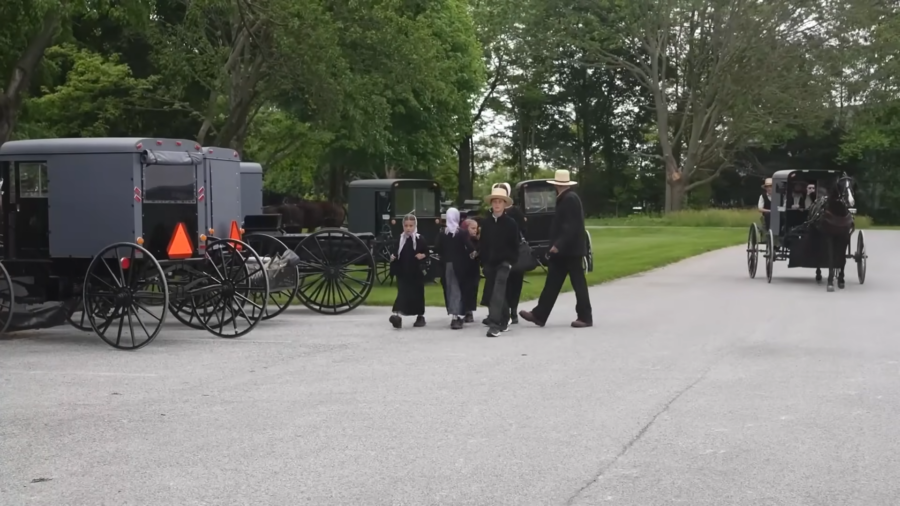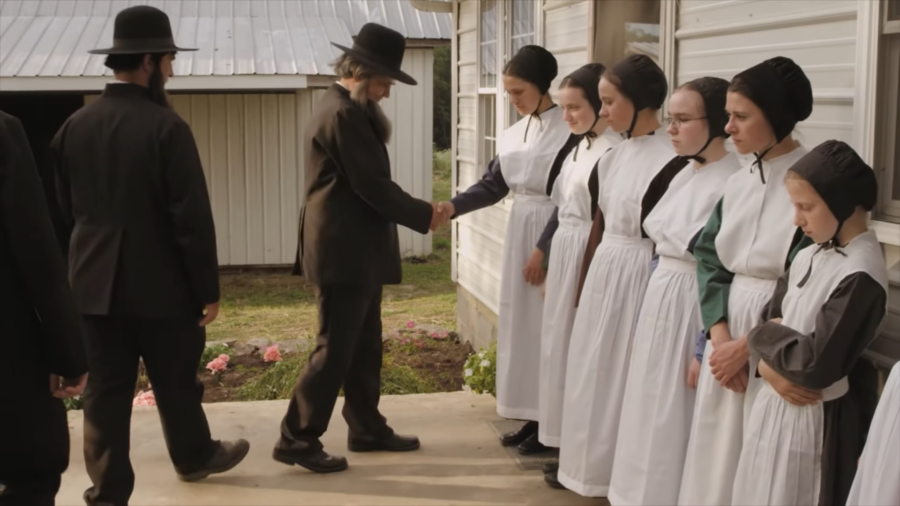The Mennonite and Amish communities share common Anabaptist roots, yet they have developed distinct identities over time.
Both groups prioritize faith, family, and community, but their approaches to modern life and technology differ significantly.
The key differences between Mennonite and Amish communities lie in their approach to modern life and technology—Amish generally reject it, while Mennonites vary widely, with many embracing it.
Mennonites are more integrated into broader society, often pursuing higher education and diverse careers, whereas the Amish maintain a more isolated, traditional lifestyle rooted in simplicity and self-sufficiency.
That is, the bottom line, of course. However, there is much more depth to it, and today, we will discuss it thoroughly. Let’s get right into it.

Table of Contents
ToggleAmish vs. Mennonite – How Are They Similar?
Both the Amish and Mennonites trace their roots back to the same place: the European Protestant Reformation.
They came out of a Christian movement known as the Anabaptists, folks who wanted to strip faith back down to the basics — simple living, serious Bible study, and a strong belief that what you believe should actually show up in how you live.
That foundation still shapes both communities today. Charity and helping others aren’t just nice ideas for the Amish and Mennonites — they’re everyday priorities.
Amish vs. Mennonite – How Are They Different?
The split between the two groups kicked off thanks to a man named Jacob Amann. He felt the Mennonites were a little too easygoing when it came to dealing with sin.
Amann argued that if someone messed up badly enough to get kicked out of the church (excommunication), it shouldn’t end there — they should also be shunned to really drive the point home.
His stricter take caught on with a lot of people, and before long, his followers had a name of their own: the Amish.
Key Highlights
- Amish reject modern technology while Mennonites often accept it.
- Amish wear plain, uniform clothing, and Mennonite attire ranges from traditional to modern.
- Amish worship in homes, Mennonites in churches.
- Amish education stops at 8th grade, and Mennonites pursue higher education.
- Amish communities are isolated, Mennonites are more integrated into society.
1. Historical Foundations
To understand the differences between the Amish and Mennonites, it’s important to look at where they came from.
Origins of the Mennonite Community
Mennonites trace their beginnings to the Anabaptist movement in 16th-century Europe. The group was formed in 1525 in Zurich, Switzerland, led by Conrad Grebel and Felix Manz. They advocated for adult baptism and the separation of church and state.
Menno Simons, a former Catholic priest, joined the movement in 1536. His leadership and writings greatly influenced the community, leading to the name “Mennonites.”
Persecution forced many to flee to other parts of Europe and eventually to North America. This migration contributed to the diversity within their groups, ranging from traditional to progressive congregations.
Origins of the Amish Community
They emerged as an offshoot of the Mennonite movement in 1693. Jakob Ammann, a Swiss Mennonite leader, advocated for stricter church practices and discipline.
Ammann’s followers became known as the Amish. They emphasized:
- Strict shunning of excommunicated members
- Distinctive plain dress
- Rejection of worldly influences
Like the Mennonites, they faced persecution in Europe. Many migrated to North America in the 18th and 19th centuries, settling primarily in Pennsylvania.
The community maintained a more conservative stance, preserving traditional practices and resisting modernization. This approach has led to their distinctive lifestyle and separate identity from other Anabaptist groups.
2. Theological Beliefs
The theological beliefs of the Amish and Mennonites share a common foundation in Anabaptist Christianity, but their interpretations and practices can differ.
Salvation and Baptism
Both Amish and Mennonites believe in adult baptism, rejecting infant baptism. They view baptism as a conscious decision to follow Christ. The Amish practice baptism around the age of 18-22, while Mennonites may baptize earlier.
They emphasize salvation through faith and good works. They believe in strict adherence to community rules (Ordnung) as part of their spiritual journey. they focus more on personal faith and a direct relationship with God.
Both groups practice foot washing as a symbol of humility and service. They also tend to be more literal in their Bible interpretation, while Mennonites may allow for more symbolic readings.
Church Leadership and Structure
Amish churches are led by bishops, ministers, and deacons chosen from within the community. Leadership roles are typically held for life. Amish worship in homes or barns, rotating between community members.
Mennonite churches often have a more structured hierarchy. Many groups have ordained pastors with formal theological training. They typically worship in dedicated church buildings.
Also, the churches are autonomous, with limited interaction between communities. Their churches may belong to larger conferences or denominations, allowing for greater cooperation and shared resources.
Decision-making is highly collective, while Mennonite churches may have more diverse governance models.
3. Cultural Practices
Cultural practices in Amish and Mennonite communities reflect their values of faith, humility, and tradition—but the ways these values manifest can differ greatly.
Language and Education
Amish communities primarily speak Pennsylvania Dutch, a dialect derived from German, alongside English. Their education typically ends after 8th grade in one-room schoolhouses.
Mennonites, on the other hand, generally use English as their primary language. Many Mennonite groups allow higher education, with some even operating their own colleges.
Their schools focus on practical skills and religious teachings. The education often includes a broader curriculum, sometimes incorporating modern subjects and technology.
Attire and Symbolism
The clothing is notably conservative and uniform. Men wear dark suits, hats, and beards after marriage. Women don plain dresses, aprons, and bonnets.
Mennonite attire varies widely between groups. Some dress similarly to the Amish, while others adopt more modern styles. Conservative women may wear head coverings, but these are often smaller than Amish bonnets.
4. Community Structure
Community structure plays a central role in shaping daily life for both Amish and Mennonite groups. While both value family, tradition, and mutual support, their approaches to gender roles, living arrangements, and societal integration reveal key cultural distinctions.
Family and Gender Roles
Amish communities adhere to traditional gender roles. Men typically work in farming or craftsmanship, while women manage the household and care for children. Amish families are often large, with many children.
Mennonite gender roles can vary. Some conservative groups maintain traditional roles similar to those of the Amish. More progressive communities allow women to work outside the home and pursue higher education.
Both groups emphasize strong family ties and multigenerational living arrangements. Elders are highly respected in both Amish and Mennonite societies.
Community Integration and Separation
Amish communities practice strict separation from the outside world. They limit technology use and prioritize community-focused activities. Amish typically hold worship services in homes, fostering close-knit relationships.
Mennonite integration varies. Old Order may resemble Amish in their separation, while progressive Mennonites engage more with mainstream society. Many Mennonites worship in designated church buildings.
Amish often live in rural areas, maintaining self-sufficient communities. Mennonites may live in both rural and urban settings, depending on their level of integration with modern society.
5. Technological and Modern Influences
Technology is one of the most defining differences between Amish and Mennonite communities.
Their contrasting approaches shape everything from daily routines to community interaction with the outside world, highlighting how each group balances tradition with modernity in distinct ways.
Approach to Technology
Amish communities generally reject most personal uses of modern technology, while Mennonites are more accepting. The Amish typically avoid electricity from public utilities, instead relying on alternative energy sources like gas lamps and generators. They also eschew cars, opting for horse-drawn buggies.
Mennonites, in contrast, use most of the technology that the general population uses. They drive cars, use electricity, and often incorporate modern appliances into their homes. Some conservative groups may limit certain technologies, but their restrictions are generally less severe than those of the Amish.
Interaction with Modern Society
Amish communities tend to live separately from the general population, maintaining their own distinct settlements. This isolation helps preserve their traditional way of life and minimize outside influences. Amish individuals typically have limited contact with non-Amish people, primarily through business dealings or necessary interactions.
Mennonites, on the other hand, live among the general population. They often work in various professions and interact regularly with non-Mennonites. This integration allows them to maintain their faith while engaging more fully with modern society.
Many of them attend public schools and universities, while Amish education typically ends after eighth grade in their own community schools. This difference in education further impacts their level of engagement with the broader world.
6. Agricultural Perspectives
Amish farmers typically use traditional methods and horse-drawn equipment for cultivation. They focus on small-scale, diversified farms that prioritize self-sufficiency. Crop rotation and natural fertilizers are common practices.
Mennonite farmers, on the other hand, often embrace modern agricultural technology. They may use tractors, combines, and other mechanized equipment. Mennonite farms tend to be larger and more specialized, sometimes engaging in commercial-scale production.
Both groups value sustainable farming practices, but their methods differ. Amish farms often produce a variety of crops and livestock for community consumption. Mennonite farms may focus on cash crops or larger dairy operations.
7. Business Ownership and Employment
Amish businesses are typically small-scale and community-focused. Craftmanship, woodworking, and handmade goods are common Amish enterprises. They often operate within their communities, selling to both Amish and non-Amish customers.
Mennonites have a broader range of business involvement. They may own or work in various industries, including manufacturing, retail, and professional services. Mennonite businesses often engage more directly with the broader economy.
Employment practices also differ. they generally work within their community or in Amish-owned businesses. Mennonites may seek employment in non-Mennonite companies and pursue higher education for professional careers.
8. Religious Services and Observances
Religious services and observances are central to both Amish and Mennonite life, reflecting their deep-rooted faith and community values.
Worship Styles
Amish worship services typically take place in members’ homes or barns, rotating between different families’ properties. These gatherings are highly community-focused and conducted in German or Pennsylvania Dutch. Their services are simple, without musical instruments or elaborate decorations.
In contrast, Mennonites often worship in designated church buildings. Their services may include hymn singing accompanied by musical instruments, depending on the specific Mennonite group. Mennonite worship tends to be more structured and may incorporate modern elements like projectors or sound systems in some congregations.
Religious Holidays and Rituals
Both Amish and Mennonite communities observe major Christian holidays such as Christmas and Easter. However, their approach to these celebrations can differ. Amish holidays are typically marked by fasting, prayer, and reflection rather than elaborate festivities.
Mennonites may engage in more diverse holiday practices, with some groups embracing traditional customs while others adopt more contemporary celebrations. Both communities practice adult baptism, a key Anabaptist ritual. The Amish generally perform baptisms in private settings, while Mennonite baptisms may occur in church or outdoor locations, sometimes involving larger congregational gatherings.
9. Demographics
Amish populations are heavily concentrated in certain regions of North America. Pennsylvania, Ohio, and Indiana have the largest Amish communities, with Ohio facing a notable challenge in 2024 as unemployment rates rise, affecting various communities including the Amish. Smaller settlements exist in other states and parts of Canada.
Mennonite populations are more widely dispersed. They have communities across North America and in numerous countries worldwide. This broader distribution is partly due to their more flexible approach to technology and integration with modern society.
Amish Population by State
According to data from Elizabethtown College’s Young Center for Anabaptist and Pietist Studies, the top U.S. states by Amish population are:
| Rank | State | Amish Population | % of U.S. Amish Population |
|---|---|---|---|
| 1 | Pennsylvania | 92,660 | 23.5% |
| 2 | Ohio | 85,965 | 21.8% |
| 3 | Indiana | 65,540 | 16.6% |
| 4 | Wisconsin | 26,365 | 6.7% |
| 5 | New York | 24,325 | 6.2% |
These five states collectively account for approximately 74.8% of the total Amish population in the U.S.
Mennonite Population by State
Based on data from the Association of Religion Data Archives, the top U.S. states by Mennonite adherents are:
| Rank | State | Mennonite Adherents |
|---|---|---|
| 1 | Pennsylvania | 126,034 |
| 2 | Indiana | 75,852 |
| 3 | Ohio | 97,517 |
| 4 | Kansas | 22,754 |
| 5 | Iowa | 15,097 |
These states are home to the largest Mennonite populations in the U.S.
10. Migration Patterns

Amish migration typically involves establishing new settlements within North America. As communities grow, they often form daughter colonies in rural areas to maintain their traditional lifestyle and agricultural focus.
Mennonite migration patterns are more diverse. Some groups, like Old Order Mennonites, have remained largely agricultural. Others have moved to urban areas and integrated into mainstream society.



















